How is the Universe bigger than its age?
We know that the Universe has been around for 13.8 billion years, but we also know we can see for 46 billion light-years. How is this possible?
“Nature decrees that we do not exceed the speed of light. All other impossibilities are optional.” -Robert Brault
One of the most remarkable discoveries of the 20th Century came from studying the great spiral nebulae littered throughout the night sky.
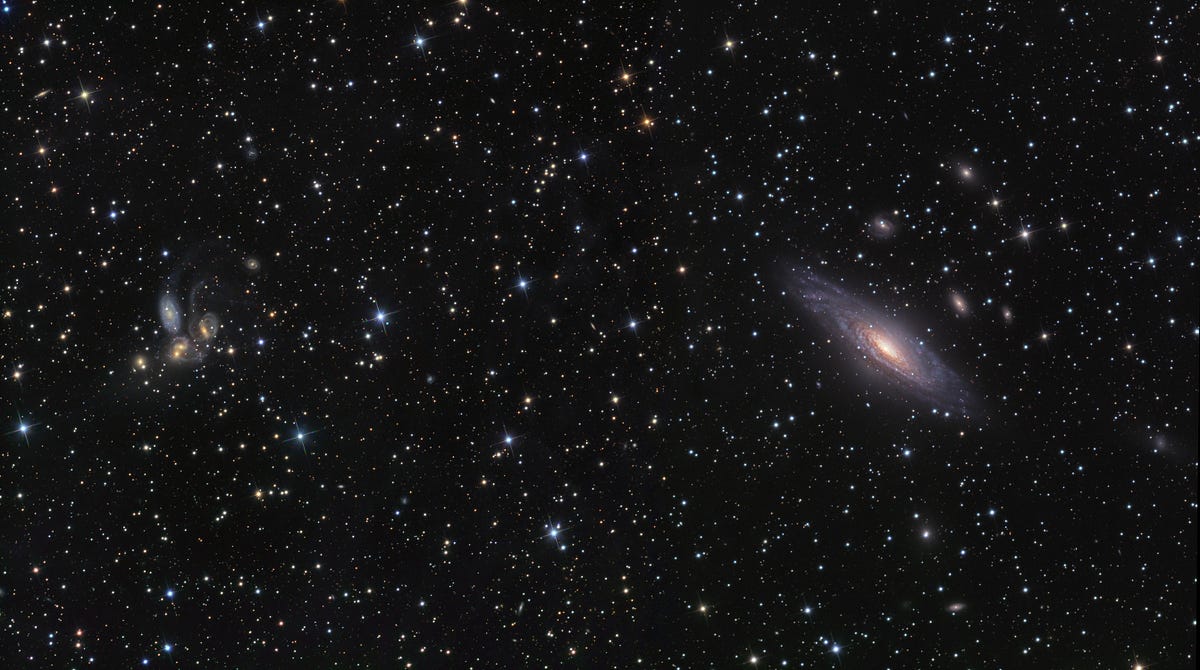
It was quickly discovered that not only were these objects galaxies very much like our own Milky Way, many thousands of light-years in size apiece, but the vast majority of them were moving away from us. What was even more exciting is that the farther away — on average — these galaxies were, the faster they appeared to be receding. It took only a few years for both the mechanism and the law governing this phenomenon to be uncovered.
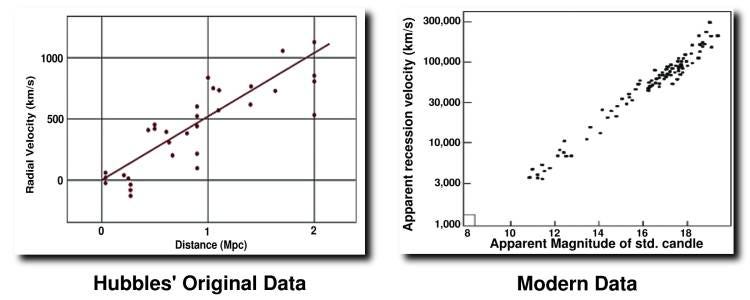
The law was the easy part: you measure how quickly the galaxy appears to be moving from the shift of its spectral lines, and you estimate its distance from a variety of methods involving standard candles. At the end of the day — even though you have uncertainties — you have data about how far away the galaxies are and also how quickly they’re moving away from you. The relationship between those two pieces of information is known as Hubble’s Law, and it tells us how distant galaxies move with respect to us.
But far more powerful was the mechanism for how this might be happening.
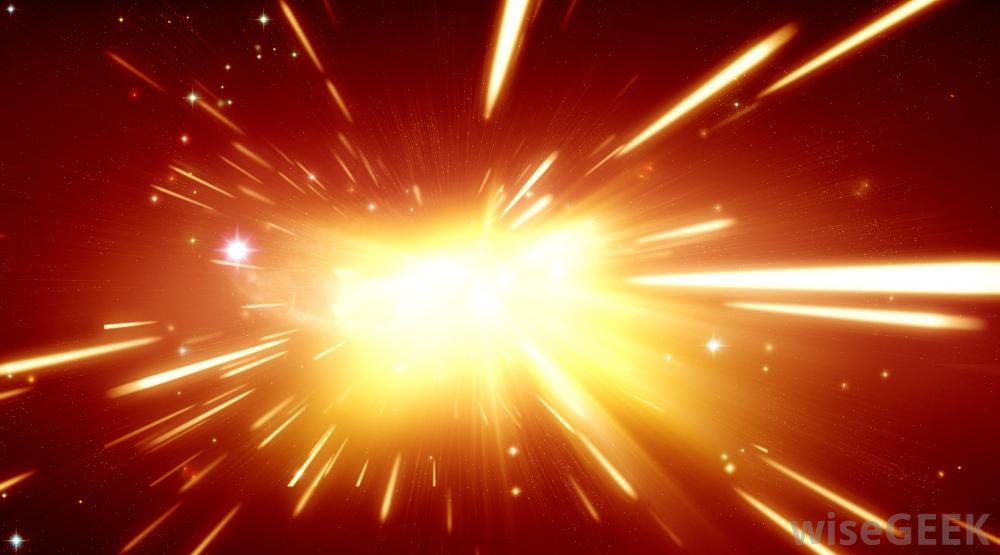
It’s very tempting to assume that the reason for this observation — that objects farther away are moving away from us more quickly — is that some type of explosion took place in the past. If this were the case, then the galaxies that received less of the “initial explosion energy” would still be closer together and moving away from each other more slowly, while galaxies that were farther away must have gotten more of that initial energy to be blasted apart at such a rapid speed.
If this was what happened, then we’d have to be very close to the very center of that explosion, and we’d expect to see a much greater density of galaxies closer to us than far away. In this scenario, space would be static: like a fixed, three-dimensional grid. It’s a possibility, but not the only one.
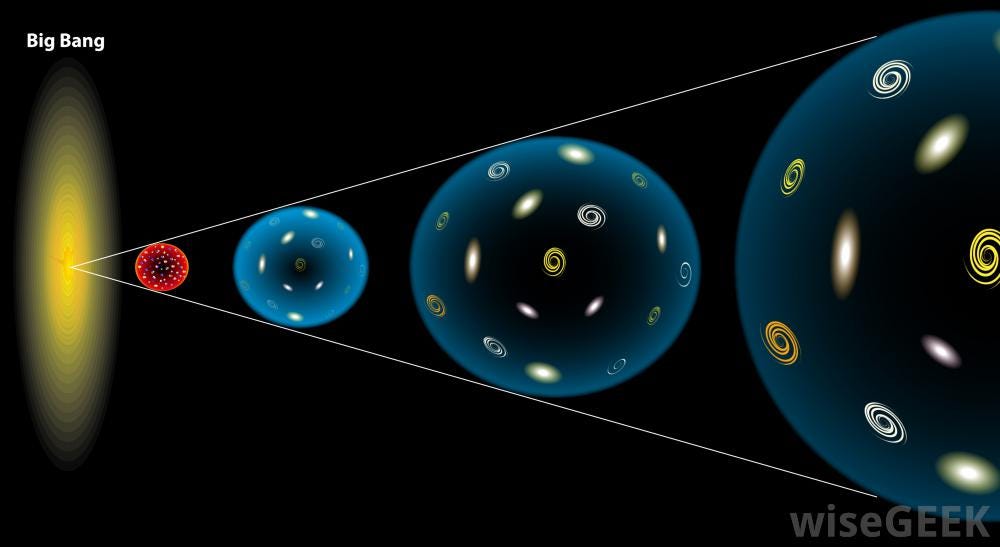
You see, it’s also possible that instead of beginning from an explosion in a Universe where space was static, the Universe could have obeyed another, more powerful solution in General Relativity: it could be expanding! Rather than starting off from some catastrophic explosion in a static Universe, the very fabric of space itself could be expanding over time, in direct proportion to the total amount of energy contained within it!
If this were the case, there should be a uniform number of galaxies — on average — in a given volume of space, the expansion rate should change in a predictable way with distance as the Universe evolves, the Universe would have been hotter in the past, and the clustering of galaxies would form a web-like structure, where each region of space looks roughly the same on the largest scales.
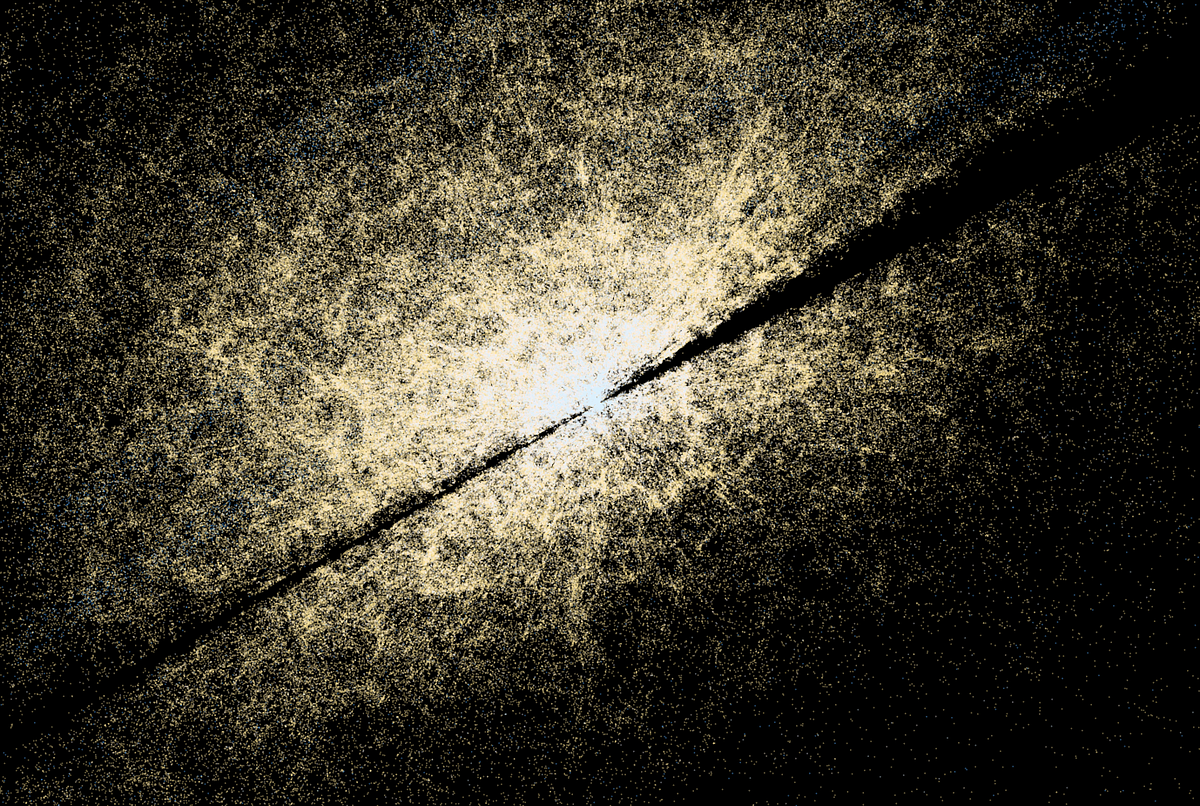
The thing is, in that original “explosion” picture where space is static, if the Universe were only around for a finite age, we’d only be able to see a simple distance defined by that age. In a static Universe that was 5 years old, we’d be able to see the light coming from objects 5 light years away and no more; in a static Universe that was 13.8 billion years old, we’d be able to see the light coming from objects 13.8 billion light years away.
But every observation we’ve been able to take has pointed us away from that possibility, and instead towards the one of expanding space, where the energy content of the Universe determines the rate of expansion, and therefore, how far away objects actually are.
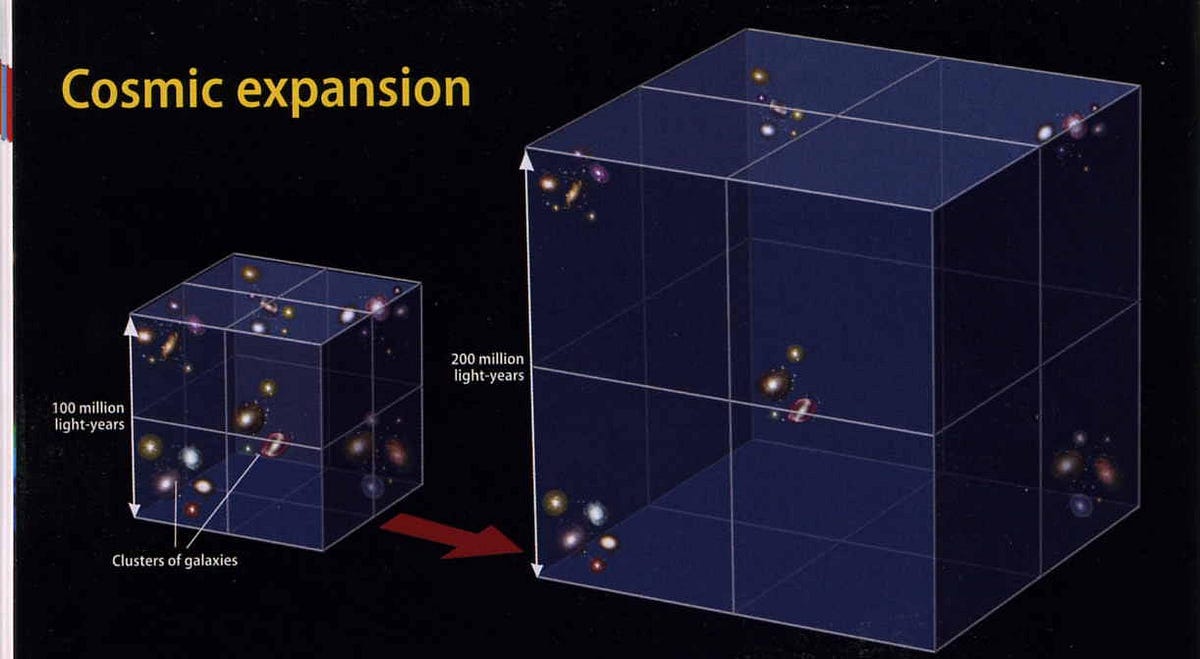
The part that’s a little less intuitive is that, in an expanding Universe, we can see farther than the simple age of the Universe! In fact, we’d have to. Think about the diagram above, where a few different clusters of galaxies are receding away from one another due to the expansion of the Universe. Imagine we’re in the cluster at the center, and we’re observing the cluster in the lower left corner.
When the light leaves the cluster in the lower left corner (left panel), that cluster is around 87 million light years from us. The light begins to travel towards us, but the Universe, remember, is expanding. This means that the space in between this cluster and our own is getting larger, like a loaf of bread rising as it bakes. The light continues to stream towards us, but as the distances continue to increase, the light has to travel more than 87 million light years before it reaches us. But when the light finally gets there (right panel), that cluster is now 173 million light years away!
Here’s the key question: how far did the light actually travel? The simple answer is more than 87 million light years, but less than 173 million light years!
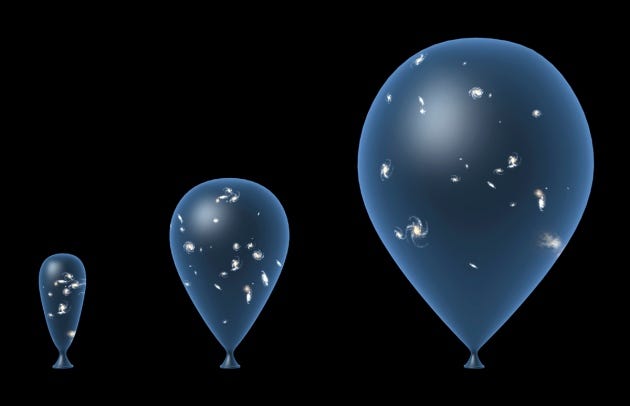
Now, let’s apply that to the entire Universe.
13.8 billion years ago, the Universe was extraordinarily hot and dense, and was filled with a tremendous diversity of energy sources: radiation (like photons), matter (like protons, neutrons and electrons), and the intrinsic energy to space itself (dark energy). If you had an expanding Universe that was filled exclusively with one of these types of energy, and you asked how distant the objects would be where the emitted light from that time was just reaching us now, you’d get a three different answers.
Why?
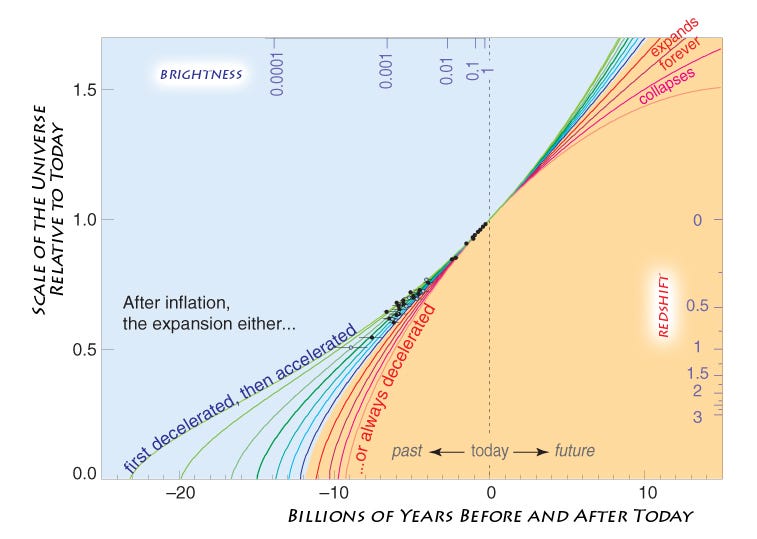
Because the energy density at every point in history determines the expansion history of the Universe, and radiation, matter and the energy intrinsic to space itself evolve differently from one another! So here’s the net result for a 13.8 billion year-old Universe:
- If the Universe was filled only with radiation at all times, the objects whose light had finally reached us after traveling for 13.8 billion years would now be 27.6 billion light years away from us.
- If the Universe was filled only with matter at all times, the objects whose light had finally reached us after traveling for 13.8 billion years would now be at a distance that was 41.4 billion light years away from us.
- And if the Universe was filled only with dark energy at all times, no light would ever reach us after traveling for 13.8 billion light years; the expansion would be exponential and we simply wouldn’t see anything after that long.
But none of those examples matches what’s actually in our Universe; our real Universe is a mix, and it’s a mix that has changed over time.

In the very early stages of the Universe, for the first few thousand years, it was dominated by radiation, (mostly) in the form of photons and neutrinos. After that, a transition took place, and matter — both normal and dark matter — became the most important component for billions of years. And then very recently, even after the formation of our Solar System and Earth, dark energy became important enough to dominate. Because dark energy has never been (and will never be) the only contributor to energy in the Universe, we’ll never suffer the “no light will ever reach us” fate, but it is enough to push the actual distance of the Universe out beyond the “matter-only” scenario: to 46.1 billion light years.
I know it’s counterintuitive, but you have to remember: 13.8 billion years ago, our entire observable Universe was smaller than the size of our Solar System is today!
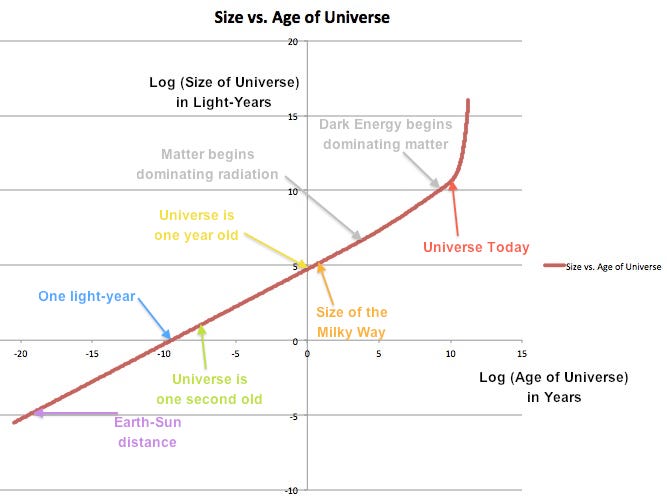
The Universe’s expansion began very rapidly and has slowed over time. In fact, it continues to slow, but it isn’t asymptoting to zero, it’s asymptoting to a finite and still significant value. But this means that a very distant object, one that the Universe’s expansion has carried to be more than 40 billion light years away, can have its light catch us today, after journeying across the Universe for almost the entire history of existence.
And when it finally reaches us, we’re seeing the light from it as it was emitted back when the Universe was extremely young.
The only difference? The spectral redshift, which allows us to determine just how old and how far away this object actually is.
And that’s why a Universe that’s 13.8 billion years old has its most distant objects that are visible to us at a current distance of 46 billion light years!





